
The narrow winding Afan Valley with its steep sides presented a major challenge to engineers. Several railway companies built lines into the valley, creating embankments, cuttings, tunnels and bridges. Whilst many features of the valley’s industrial past have gone, several of the bridges remain - each different in their construction and design.
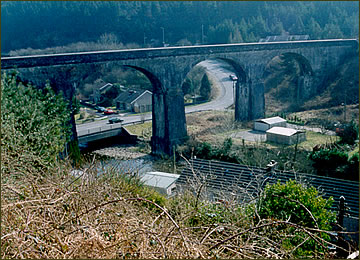 The aqueduct at Pontrhydyfen was built by John Reynolds in 1825 to supply water to the blast furnaces at his Oakwood Iron Works. It was the earliest large bridge in the valley and the water course had a pathway on either side for pedestrians. Today it provides a walkway for pupils from Pontrhydyfen to school.
The aqueduct at Pontrhydyfen was built by John Reynolds in 1825 to supply water to the blast furnaces at his Oakwood Iron Works. It was the earliest large bridge in the valley and the water course had a pathway on either side for pedestrians. Today it provides a walkway for pupils from Pontrhydyfen to school.
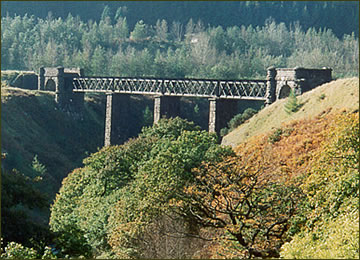 The Llynfi and Ogmore Railway Viaduct consists mainly of iron with a wooden decking on large stone piers and was built in 1878 to link the railway with the South Wales Mineral Railway. It should have had nine stone arches but the masons needed for the work were not available. The use of steel was not common until the early 1900s.
The Llynfi and Ogmore Railway Viaduct consists mainly of iron with a wooden decking on large stone piers and was built in 1878 to link the railway with the South Wales Mineral Railway. It should have had nine stone arches but the masons needed for the work were not available. The use of steel was not common until the early 1900s.
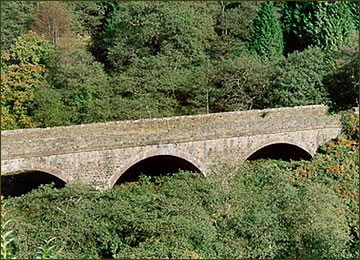 Seven Arches in Cymmer is a single track railway bridge built in 1890 to cross the River Afan by the Swansea Bay Railway. It was built of stone with seven brick arches.
Seven Arches in Cymmer is a single track railway bridge built in 1890 to cross the River Afan by the Swansea Bay Railway. It was built of stone with seven brick arches.
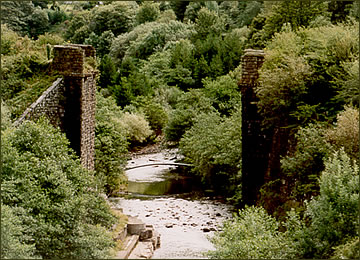 The former iron bridge on the Rhondda and Swansea Bay Railway from Pontrhydyfen station provided a link via the railway cutting known locally as the "Rock of Gibraltar" to Port Talbot.
The former iron bridge on the Rhondda and Swansea Bay Railway from Pontrhydyfen station provided a link via the railway cutting known locally as the "Rock of Gibraltar" to Port Talbot.
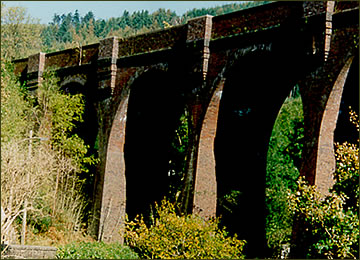 The nine arch Pontrhydyfen viaduct built in 1898 was the last railway bridge built in the valley. It was built in brick rather than stone because it was cheaper. The bridge linked the Tonmawr collieries via the Pelenna valley to Port Talbot docks.
The nine arch Pontrhydyfen viaduct built in 1898 was the last railway bridge built in the valley. It was built in brick rather than stone because it was cheaper. The bridge linked the Tonmawr collieries via the Pelenna valley to Port Talbot docks.
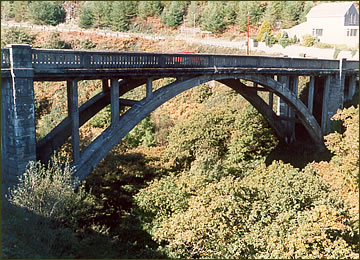 Cymmer Arch built in 1920 out of reinforced concrete was one of the largest single span concrete bridges of its time. It provided a vital and easy link from Cymmer to Abercregan and Glyncorrwg.
Cymmer Arch built in 1920 out of reinforced concrete was one of the largest single span concrete bridges of its time. It provided a vital and easy link from Cymmer to Abercregan and Glyncorrwg.


